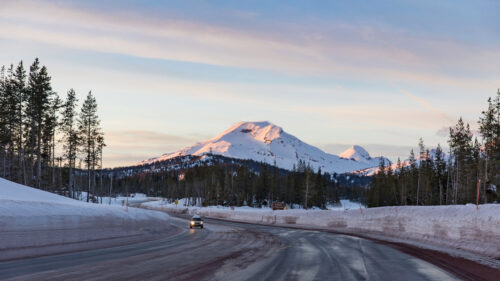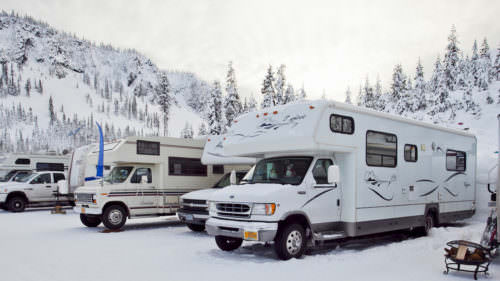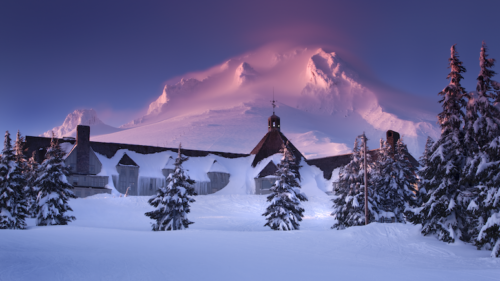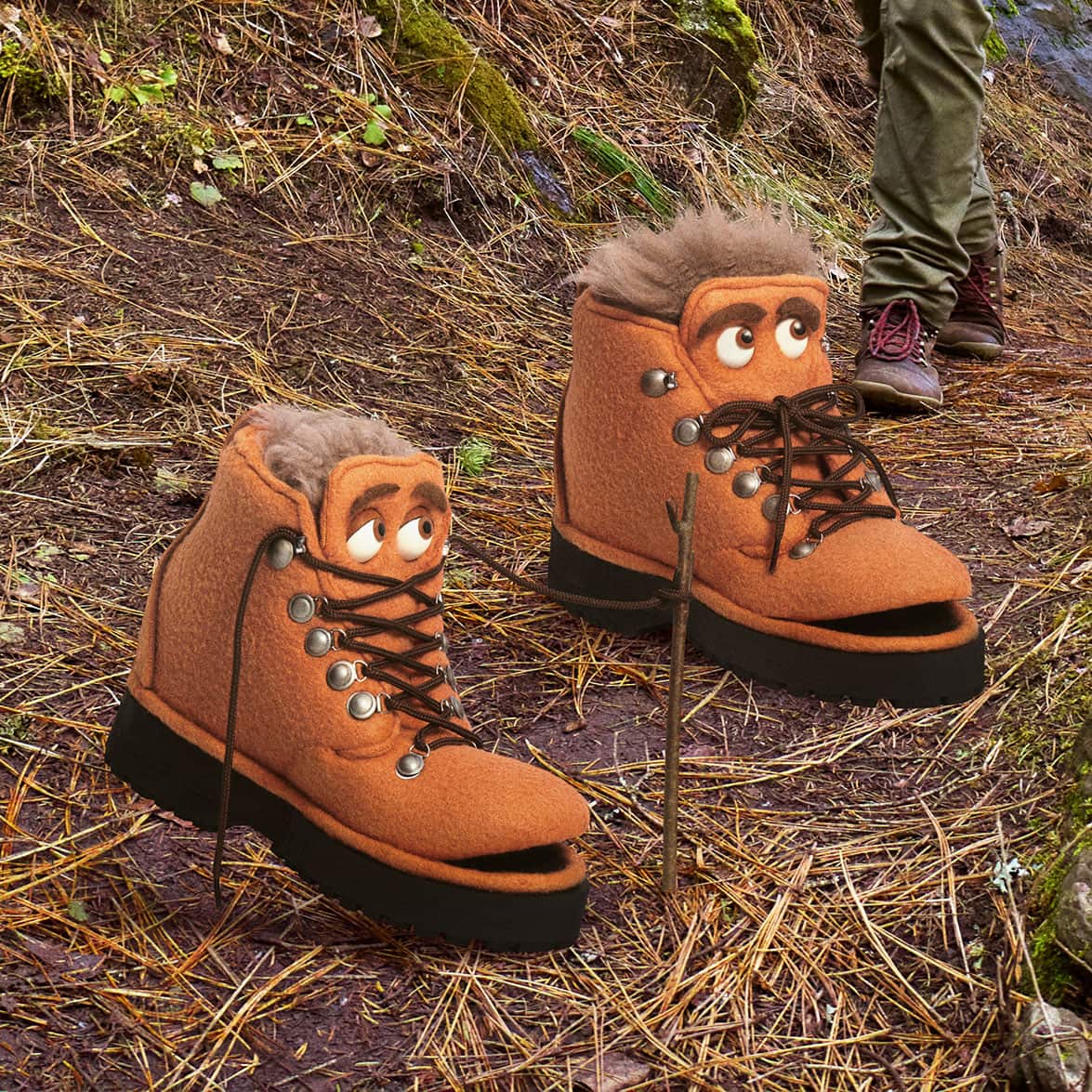The famous John Muir quote “The mountains are calling and I must go” resonates in Oregon year-round, but winter can be a challenge. The decision of how and when to travel is very much dependent on the weather. Luckily, rain, sleet, snow and wind don’t have to completely disrupt your travel plans. Here are some tips to help you travel safely in winter conditions.
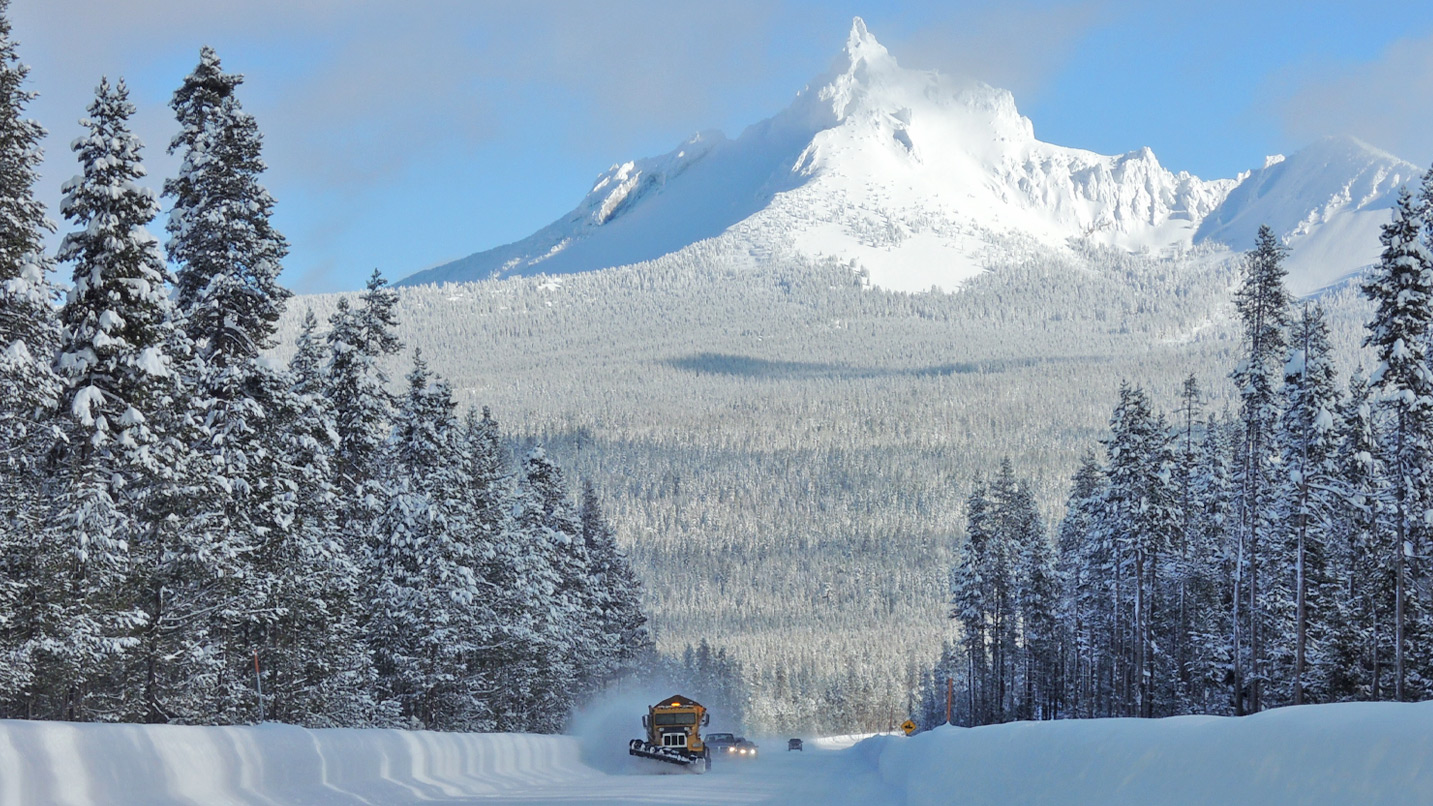
What to Know About Oregon’s Maritime Climate
From the Pacific Coast to the Cascade mountains, Oregon’s climate is highly impacted by the ocean, explains KGW chief meteorologist Matt Zaffino. This maritime-influenced climate means wet winters in Western Oregon and snow with high moisture content in the mountainous areas in Southern, Central and Eastern Oregon.
Rain is a given in Northwest winters, and it can easily turn to slush or snow if you’re traveling any significant distance in Oregon during a weather event. It’s likely you’ll pass through what Zaffino calls a “transition zone,” when your travels bring you to higher elevations or the temperature fluctuates. Extra caution is needed under these slippery conditions, including reducing your speed, avoiding sudden stops or direction changes, and driving carefully in shaded areas and corners. If you’re experiencing slushy conditions and gaining in elevation, expect that you’ll soon encounter snowfall — this is your sign to turn back if you’re not prepared for winter travel.
Driving in snow requires all the same driving precautions as above. Visibility is one of the biggest challenges. Turn on your car’s window defroster to prevent fogging. Pull over somewhere safe to scrape your windshield and remove ice from wiper blades when necessary. Consider whether it’s advisable to continue on.
And it’s not just the mountains that can bring travel challenges. High winds and heavy rain on the Coast can be dangerous for the unprepared. Rain can create flooded roadways, especially when tides are high and rivers spill over the road. Don’t attempt to drive through standing water — you can seriously damage your car.
Wind is also a frequent winter travel partner when you drive through the Columbia River Gorge. “The Gorge is its own animal,” cautions Zaffino. “Even though the elevation is low, cold air gets trapped in there and keeps the snow and ice from changing to rain. Strong east winds are another challenge for drivers, reducing visibility and making vehicles harder to control.”
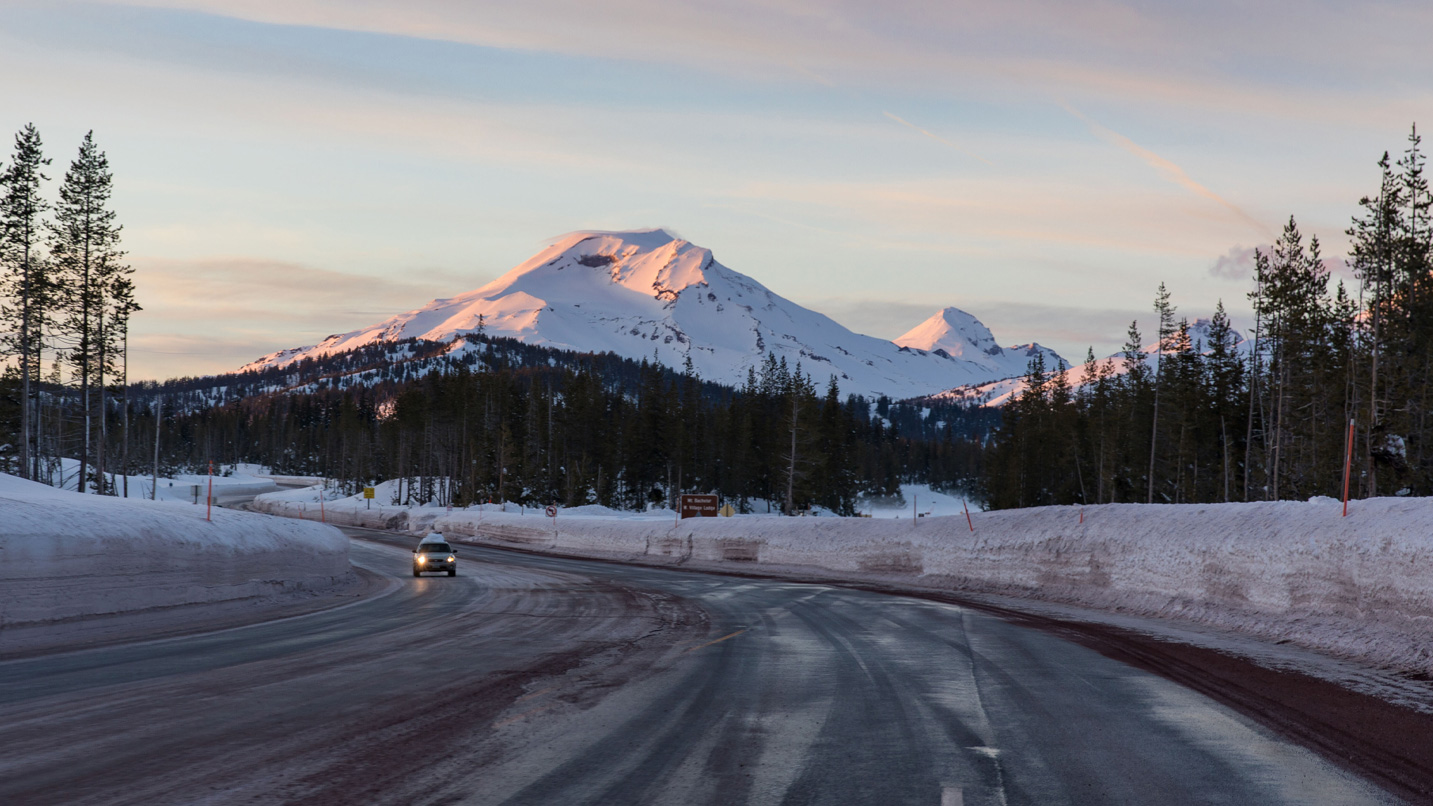
Tips for Driving Safely
Knowing what to expect can help you prepare and consider alternative travel options.
- Keep an eye on the weather forecast as your travel dates near; if you see poor conditions in the forecast, consider rescheduling your trip.
- On the day of travel, refer to TripCheck (or call 511) for live road cams and current road conditions including closures, accidents and delays
- Oregon mandates that you must have chains or traction tires for your car in snowy conditions at certain times of the year. Don’t leave home without them in winter if you plan to drive in the mountains. See the updated information about Oregon’s chain laws and requirements before you leave home.
- Don’t depend on Google Maps or GPS directions in winter, as they may not avoid routes that are closed or unsafe during winter storm conditions.
- Leave plenty of room between vehicles on the road, and be sure to maintain your vehicle for winter conditions. Check tires to ensure there’s plenty of tread, replace worn windshield wipers or switch to winter-specific blades. Check that you have plenty of windshield-washer fluid, and top off with a winter-specific fluid if needed.
Allow plenty of extra time, and be prepared with an ice scraper, water, blankets and a full tank of gas. Follow winter driving safety best practices.
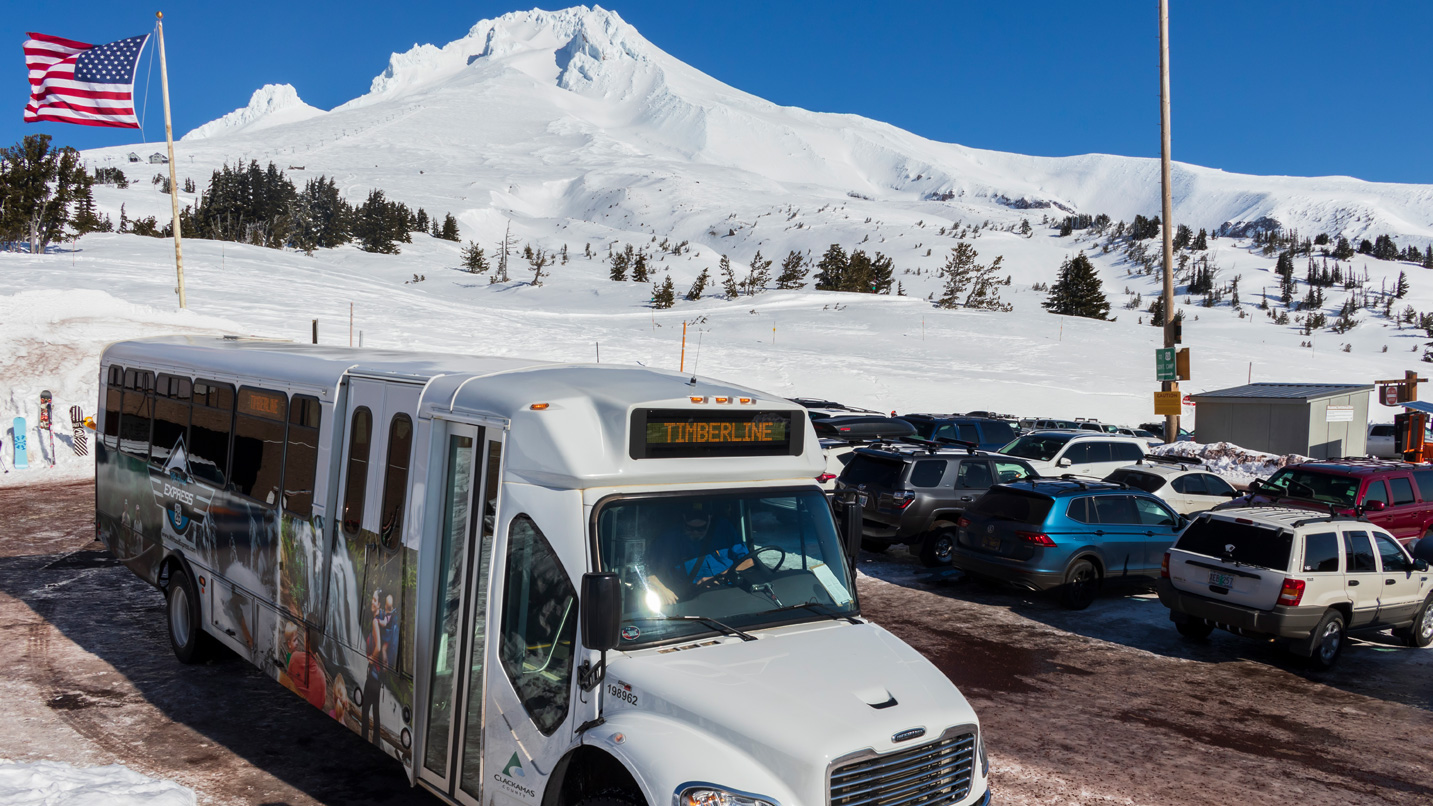
Try a Car-Free Alternative
If winter driving seems like something you’d like to avoid, there are plenty of alternatives, including a network of airports across Oregon. One of the most popular winter routes is the daily Portland-to-Redmond nonstop flight on Alaska Airlines, a quick 45-minute hop over the mountains, or the budget-friendly Central Oregon Breeze bus service with stops at Portland International Airport and Portland’s Amtrak station. Once in Bend, you’ll find numerous car-free solutions for getting to the sno-parks and up to Mt. Bachelor.
Visitors to the Willamette Valley and Southern Oregon can opt to take an Amtrak long-distance train, with stops in Portland, Salem, Eugene, Klamath Falls and more.
Visitors heading out from Portland also have options for car-free access to Mt. Hood — including Mt. Hood Express buses equipped for winter travel — for ski resorts, sno-parks and cozy lodges. The Columbia Gorge Express services the route from Portland to The Dalles via Hood River. Local transportation is also available, including the Hood River Connect and the wintertime Gorge to Mountain Express.
Another great option: Take a guided tour with one of Oregon’s seasoned guides. They can show you the slopes for wintry fun in any of the mountainous areas of the state. Willamette Valley vineyards and Gorge waterfalls are also accessible nearly year-round through a seasoned guide service like Peak Tours & Transit. Visitors to Southern Oregon can book local wine tours through Bravo Outings.
